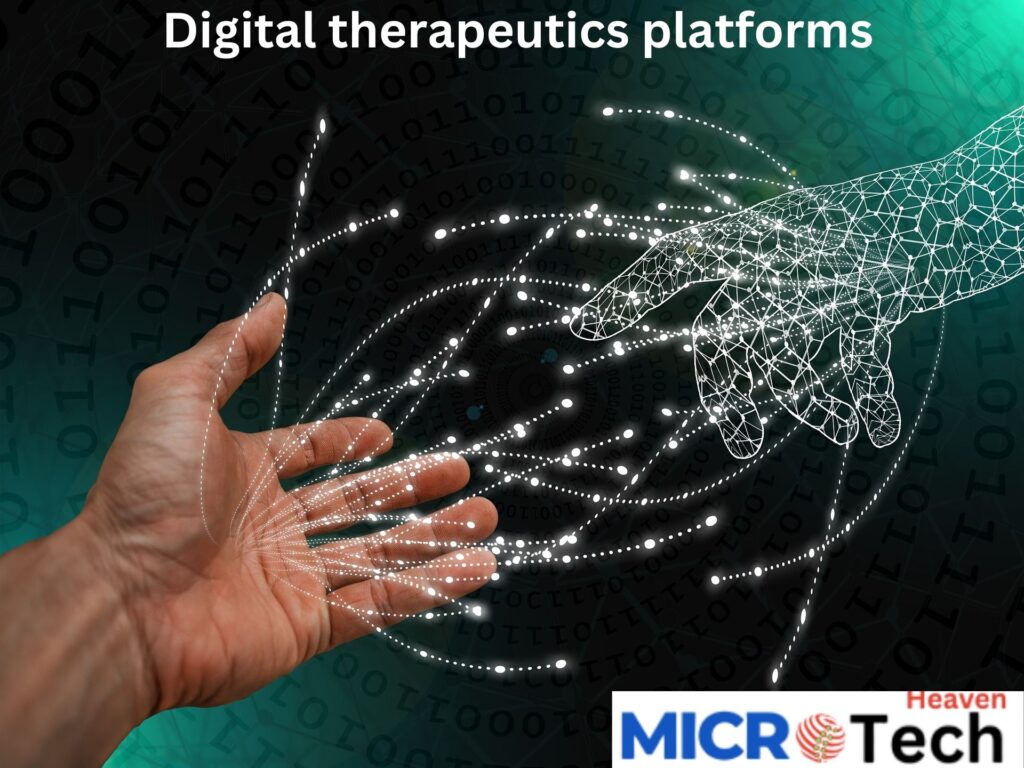Table of Contents
- Introduction to Digital Therapeutics
- How Digital Therapeutics Work
- Types of Digital Therapeutics Platforms
- Benefits of Digital Therapeutics
- Challenges and Considerations
- Step-by-Step Guide to Choosing a Digital Therapeutics Platform
- Conclusion: Why You Should Consider Digital Therapeutics
- FAQs
Introduction to Digital Therapeutics
In the ever-evolving landscape of healthcare, Digital Therapeutics (DTx) has emerged as a groundbreaking solution that combines technology with evidence-based medicine. These platforms are designed to deliver therapeutic interventions directly to patients through software applications, helping them manage, treat, or even prevent various medical conditions. Unlike wellness apps that merely track fitness or remind users to take medications, DTx platforms are backed by clinical research and are subject to regulatory oversight. Imagine a world where managing chronic diseases like diabetes or anxiety is as simple as using an app on your smartphone. This is not just a dream; it’s the reality that digital therapeutics aim to create. By utilizing various digital tools—such as mobile apps, sensors, and even virtual reality—DTx platforms provide personalized treatment plans that adapt to individual patient needs.
How Digital Therapeutics Work
At their core, Digital Therapeutics relies on behavioral and lifestyle changes driven by data collected from users. This data can include everything from daily activity levels and medication adherence to mood tracking and symptom reporting. The information gathered is then analyzed to provide feedback and recommendations tailored to the patient’s specific situation. For example, let’s consider a patient diagnosed with type II diabetes. A digital therapeutic platform could help this patient track their blood sugar levels, suggest dietary changes based on their eating habits, and even provide reminders for medication—all while offering educational resources about managing diabetes effectively.
Key Components of Digital Therapeutics
- Evidence-Based Interventions: All DTx solutions must be clinically validated through rigorous testing.
- User Engagement: These platforms often employ gamification elements or interactive content to keep users engaged.
- Data Privacy: Ensuring patient data is secure and compliant with regulations like HIPAA is paramount.
Types of Digital Therapeutics Platforms
Digital therapeutics can be categorized based on the conditions they address or the technology they utilize:
1. Chronic Disease Management
These platforms focus on long-term health conditions such as diabetes, hypertension, and asthma. For instance, Propeller Health offers a platform that helps patients manage asthma by tracking medication usage and symptoms.
2. Mental Health Solutions
With rising mental health issues exacerbated by the COVID-19 pandemic, DTx platforms like Pear Therapeutics provide cognitive behavioral therapy (CBT) for conditions such as depression and anxiety.
3. Behavioral Health
Platforms in this category aim to change unhealthy behaviors related to substance abuse or obesity. They often include features for tracking triggers and providing coping strategies.
4. Rehabilitation
Some DTx solutions focus on physical rehabilitation through guided exercises and real-time feedback using technologies like virtual reality or computer vision.

Benefits of Digital Therapeutics
The advantages of adopting digital therapeutics are numerous:
Improved Access to Care
Digital therapeutics break down geographical barriers, allowing patients in rural or underserved areas to access high-quality care without needing to travel long distances.
Enhanced Patient Engagement
By providing interactive content and personalized feedback, DTx platforms keep patients engaged in their treatment plans, leading to better adherence and outcomes.
Cost-Effectiveness
Many studies have shown that using digital therapeutics can reduce healthcare costs by minimizing hospital visits and improving disease management.
Data-Driven Insights
These platforms collect vast amounts of data that can be used not only for individual patient care but also for larger population health management strategies.
These platforms collect vast amounts of data that can be used not only for individual patient care but also for larger population health management strategies.
Challenges and Considerations
While the benefits are compelling, there are challenges associated with implementing digital therapeutics:
Regulatory Hurdles
Navigating the regulatory landscape can be complex for developers seeking approval for their DTx products.
Data Privacy Concerns
With extensive data collection comes the responsibility of ensuring patient privacy and security. Any breach could have serious consequences for both patients and providers.
User Adoption
Not all patients are tech-savvy; thus, ensuring ease of use is crucial for widespread adoption.
Step-by-Step Guide to Choosing a Digital Therapeutics Platform
Selecting the right digital therapeutics platform can be daunting, but following these steps can simplify the process:
Step 1: Identify Your Needs
Determine what specific health issues you want to address with digital therapeutics—be it chronic disease management, mental health support, or rehabilitation.
Step 2: Research Available Options
Look into various DTx platforms available in the market. Check their clinical evidence, user reviews, and case studies.
Step 3: Evaluate Features
Consider what features are most important for your situation—such as data tracking capabilities, user engagement tools, or integration with other healthcare services.
Step 4: Assess Regulatory Compliance
Ensure that any platform you consider complies with necessary regulations like HIPAA in the U.S., which governs patient data privacy.
Step 5: Test the Platform
If possible, take advantage of free trials or demos offered by DTx providers to see how well the platform meets your needs before committing.
Conclusion:
Why You Should Consider Digital Therapeutics
In conclusion, Digital Therapeutics represents a significant advancement in healthcare technology that offers patients effective tools for managing their health conditions. With proven clinical benefits and an increasing number of platforms available, there has never been a better time to explore these innovative solutions. By embracing digital therapeutics, you not only empower yourself with knowledge but also gain access to personalized care that can significantly improve your quality of life. Whether you’re managing a chronic condition or seeking support for mental health challenges, there’s likely a digital therapeutic solution tailored just for you.
FAQs
1. What are Digital Therapeutics?
Digital therapeutics are evidence-based software solutions designed to prevent, manage, or treat medical disorders through clinically validated interventions.
2. How do I know if a Digital Therapeutic platform is right for me?
Consider your specific health needs and evaluate different platforms based on features, clinical evidence, and user reviews before making a decision.
3. Are Digital Therapeutic platforms safe?
Yes, reputable DTx platforms undergo rigorous testing and regulatory scrutiny to ensure safety and efficacy before reaching consumers.
4. Can I use Digital Therapeutic solutions alongside traditional treatments?
Absolutely! Many DTx solutions are designed to complement traditional therapies and enhance overall treatment effectiveness.


